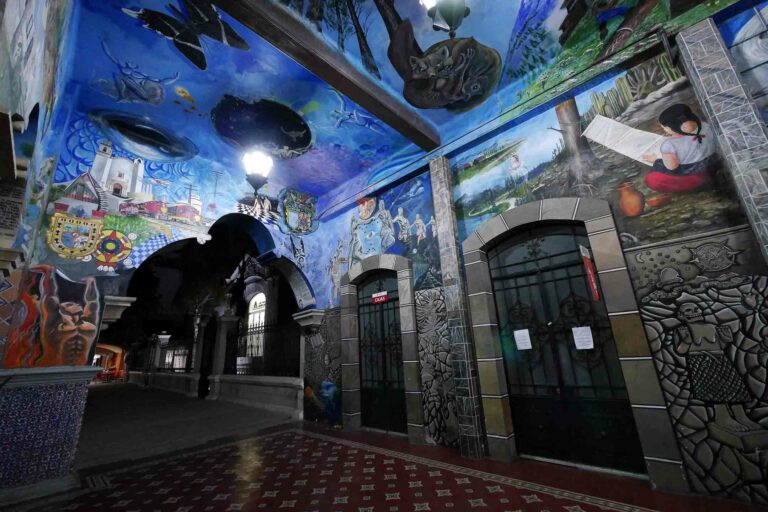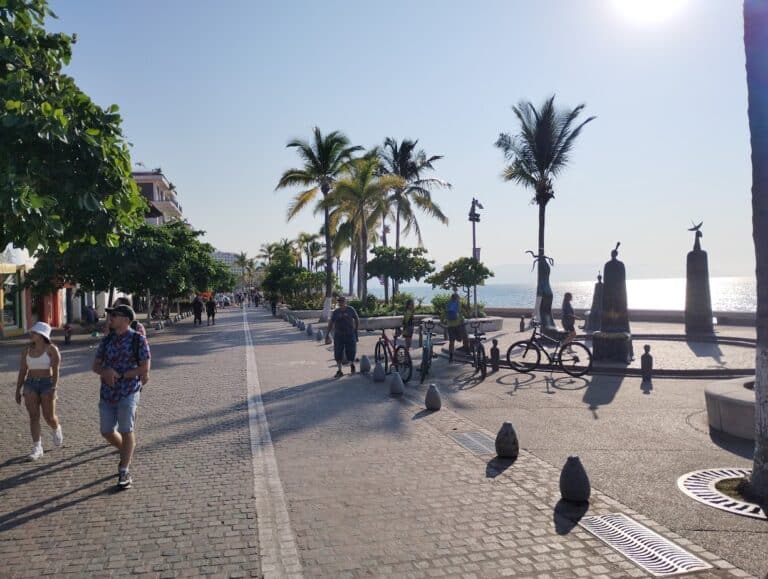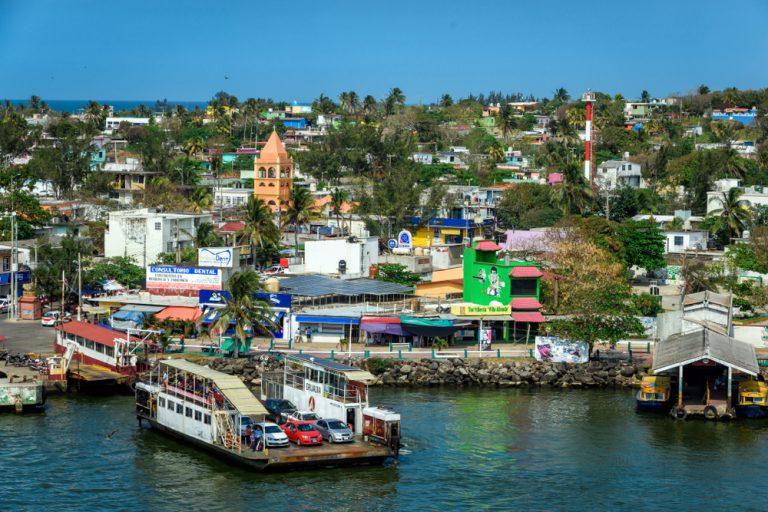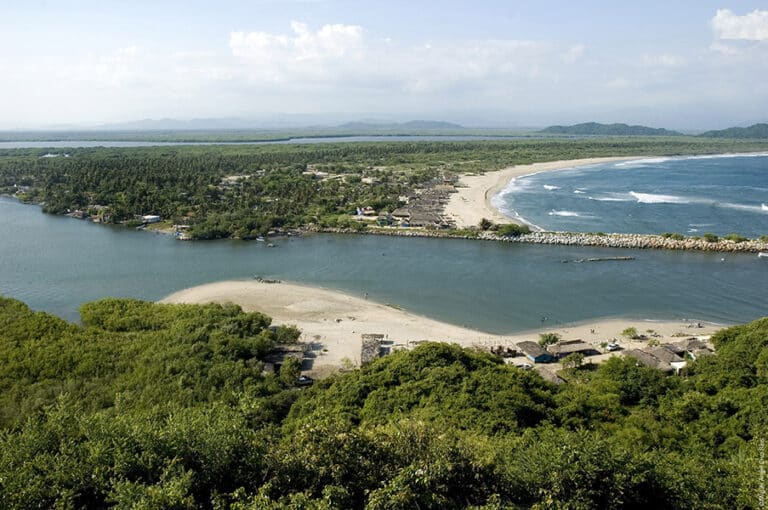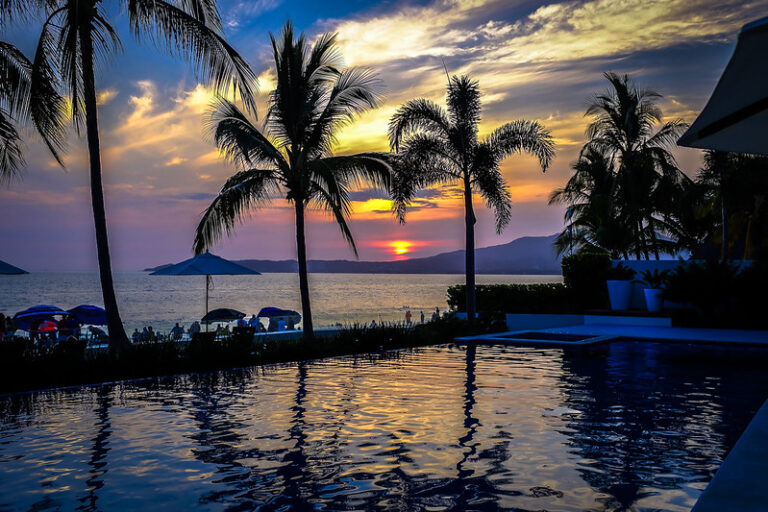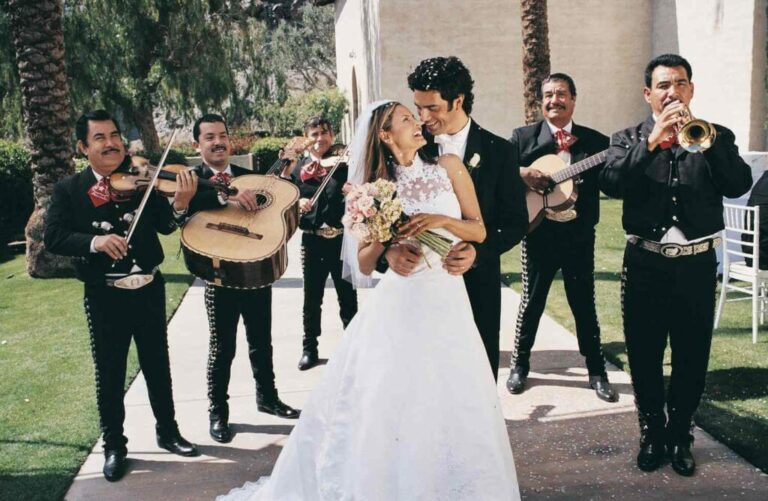The Mayan Route Unveiled: Your Epic Road Trip Awaits!
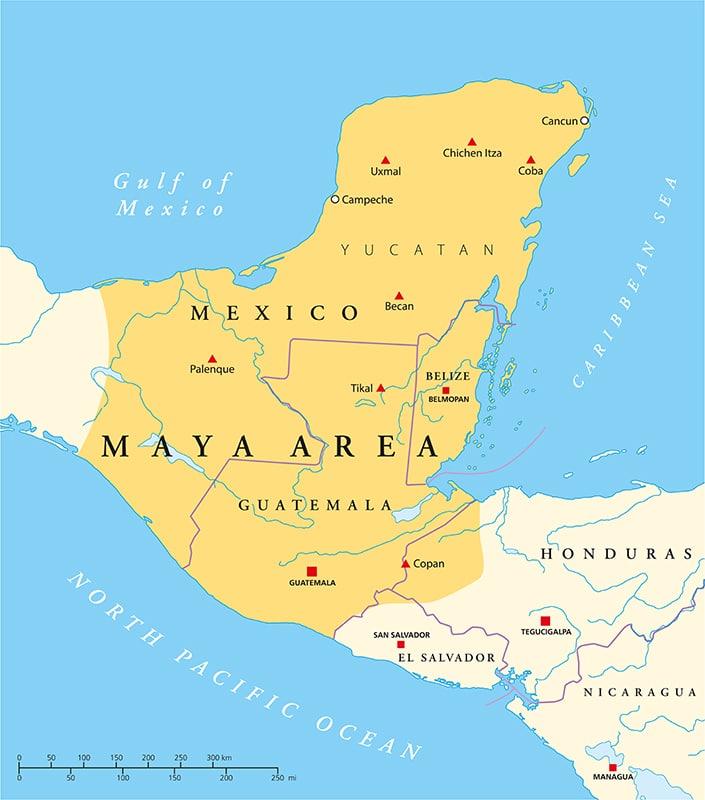
The Mayan Route Unveiled: Your Epic Road Trip Awaits!
The Mayan Route brings together important elements such as history, culture, and nature places like Quintana Roo, Campeche, and Yucatan.
This memorable adventure will take you to places like Uxmal, Chichen Itza, and Tulum, cities of great importance to the Mayan culture. So let’s get ready to travel back in time!
Before showing you the places you will visit, you must learn a little about the Mayas, who were incredible architects, designers, and pyramid builders.
In the beginning, the Mayan culture was one of the main civilizations developed in ancient Mesoamerica. It stood out for its numerical, astronomical, and calendrical writing system.
It also became very attractive for its art, architecture, and artistic forms of jade, wood, obsidian, ceramics, and carved stone.
Likewise, their cosmovision stands out because they established 13 levels in the sky and 9 in the underworld; between these two “planes” was the world of the living.
Their gods had to be appeased through rituals, human sacrifices, or ceremonial offerings, and their inhabitants buried their dead under their houses.
The Mayan Route Guide
Chetumal
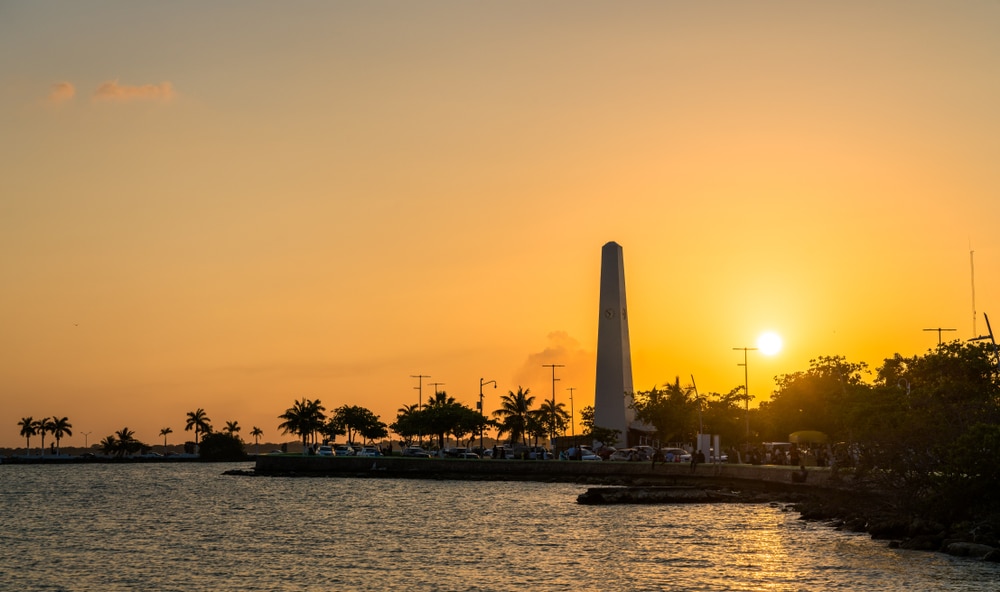
Our first destination of the Mayan Route Mexico is the capital of the state of Quintana Roo: Chetumal.
Legend has it that the first mestization of the shipwrecked Gonzalo Guerrero and Princess Zazil Há founded Chetumal.
That is why Chetumal is called the “Cradle of Mestizaje.”
Although in 1936, it received its current name as a tribute to the Mayan village in the area, called Chac-Temal.
You can’t miss the archaeological sites of Kohunlich and Dzibanché, which are full of colors and nature sounds.
If you travel by car, you can find them 1 hour and 30 minutes from Chetumal, on the Chetumal – Villahermosa highway traveling about 100 km.
You can also visit the museums and monuments along Bahia Boulevard, the longest in the entire Yucatan Peninsula.
Some museums are the City Museum, which exhibits items from the city’s founding, and the Museum of Mayan Culture, which displays Mayan history.
Belize Free Zone
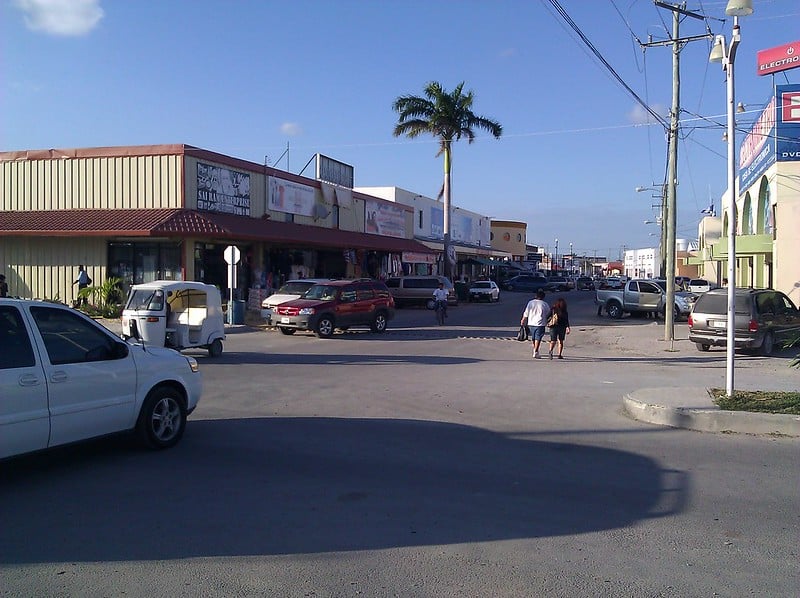
Initially, the Belize Free Zone was called the Corozal Free Zone.
It is a duty-free commercial area between Mexico and Belize, in Santa Elena.
From a historical aspect, this territory was occupied by a Mayan civilization. They built some ceremonial centers, which are still unexplored.
Therefore, you can locate it by crossing the Rio Hondo through a border bridge on foot or by car without needing a passport (if you’re Mexican).
What goods can I find in the Belize free zone? Imported products are sold duty-free, at lower prices, generally luxury products such as perfumes, clothes, shoes, and local accessories for a nice souvenir from the Mayan Route.
Also, the place has around 300 stores where you will find merchandise from all over the world, such as Panama, China, and Hong Kong, even at wholesale prices.
If you are interested, you can also enjoy casinos with nightly shows, or if you prefer, you can dine at various specialty restaurants.
Bacalar, a must-see destination on the Mayan Route
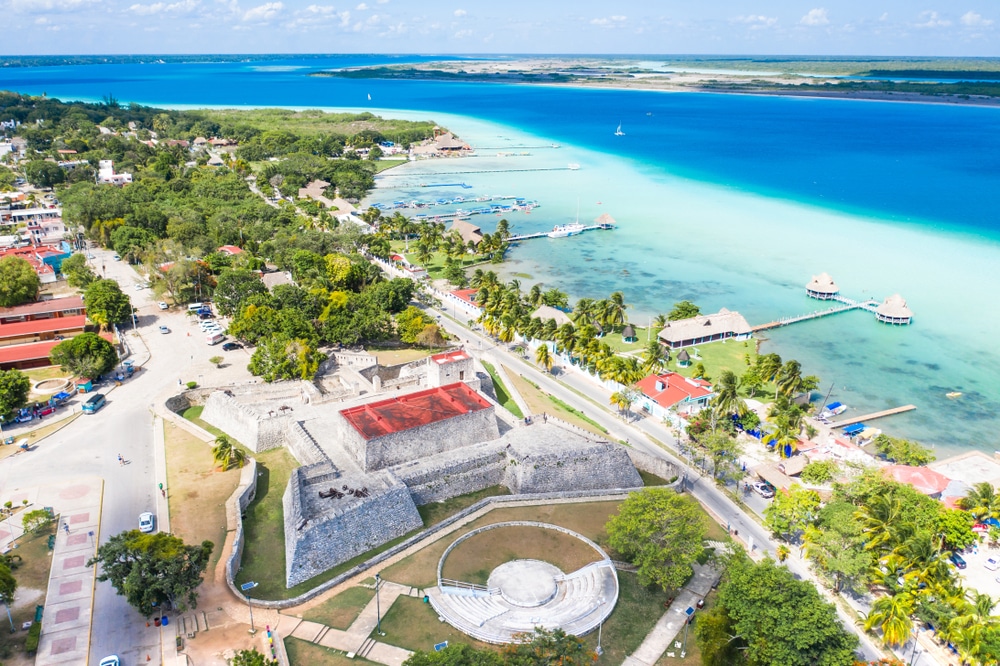
The Itzaes Mayas initially founded Bacalar in pre-Columbian times between 415 to 435 A.D. under Sian Ka’an Bakhalal.
For centuries, Bacalar suffered plundering by pirates because it was an essential place for merchandise such as dye sticks, a pigment coveted by the English.
For this reason, you will find the Fort of San Felipe, built in 1729 to stop pirate ships’ attacks and protect the Caribbean Sea’s Mayan community.
This fort stands out for its military construction, four bastions, and eleven cannons. It is currently a garden with Mayan and Spanish figures and the Museum of Piracy.
Bacalar became a Magical Town in February 2007, about a four-and-a-half-hour drive from Cancun.
The seven colors lagoon
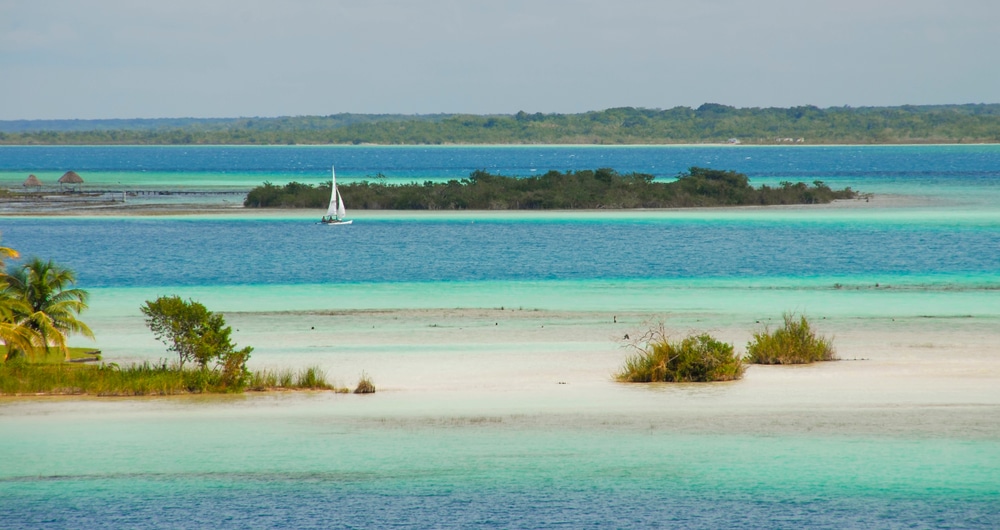
This impressive lagoon, Laguna Bacalar or Laguna Arco Iris (Rainbow Lagoon), is in Bacalar in Quintana Roo.
An interesting fact is that it is formed by seven cenotes, including a large lagoon 43 kilometers long and 1,100 meters wide. It is big!
Also, depending on the time of day, the sun’s rays illuminate the entrances of the subway caverns to appreciate the different ranges of colors of the lagoon.
This lagoon is 40 minutes from Chetumal.
Among the main characteristics of this place on the Mayan Route are its transparent waters and white sand, where you will find fish, parrots, and scarlet macaws.
You can also visit cenotes and the site of the Abandoned Boat. You can visit spas and restaurants on the shores and go to palapas or camping areas.
Finally, on your tour, you can visit the Pirate Channel, a natural formation that maintains a dense jungle that connects the Hondo River with the lagoon of the seven colors.
The archaeological site of Calakmul
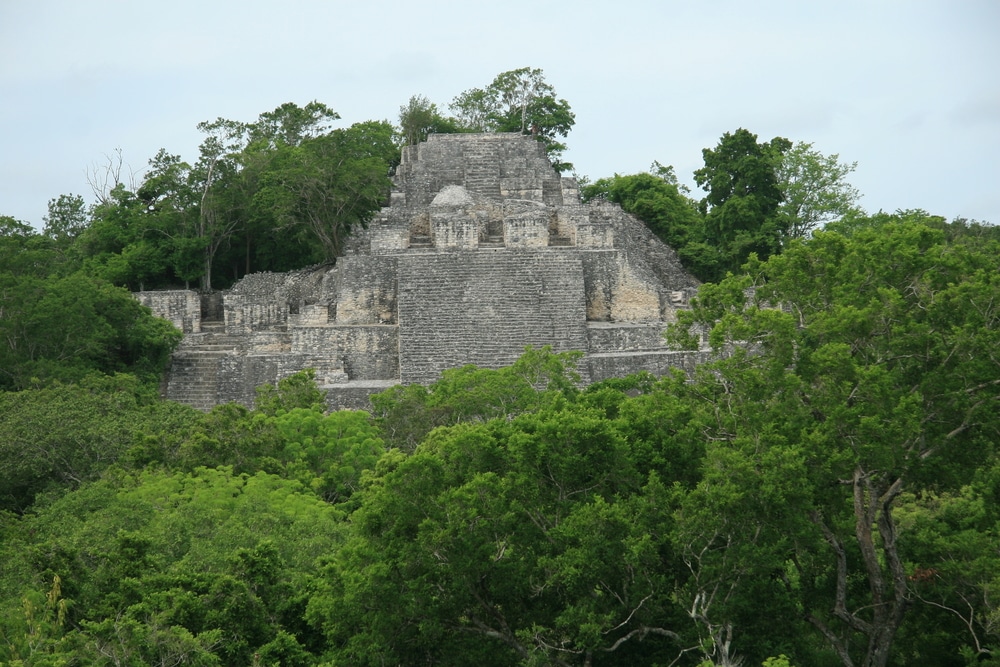
Calakmul means “The city of the adjacent mounds.” An archaeological site that was formerly a Mayan city developed in the region.
Its moment of apogee occurred in the classic period because it housed up to 50 thousand inhabitants.
But after the great collapse, it remained abandoned for 600 years.
This happened after the arrival of the Spaniards and their disinterest in dominating these lands that maintained the absence of precious metals, and its soils were poor to cultivate.
Also, I must mention that this settlement was part of one of the most powerful dynasties, the Kaan, whose emblem was the Snake Head in war campaigns.
According to National Geographic, jade was the favorite stone of the gods and was used only in jewelry by royalty or the grave goods of important people.
Another curious fact is that according to Mayan belief, all this land is protected by the “aluxes,” magical elves that ensure no one disturbs the area.
Where is Calakmul? It is in the central sector of the Yucatan Peninsula, about three hours and a half from Bacalar by car, so don’t forget to visit this destination on the Mayan Route.
Campeche City: An important site of the Mayan Route
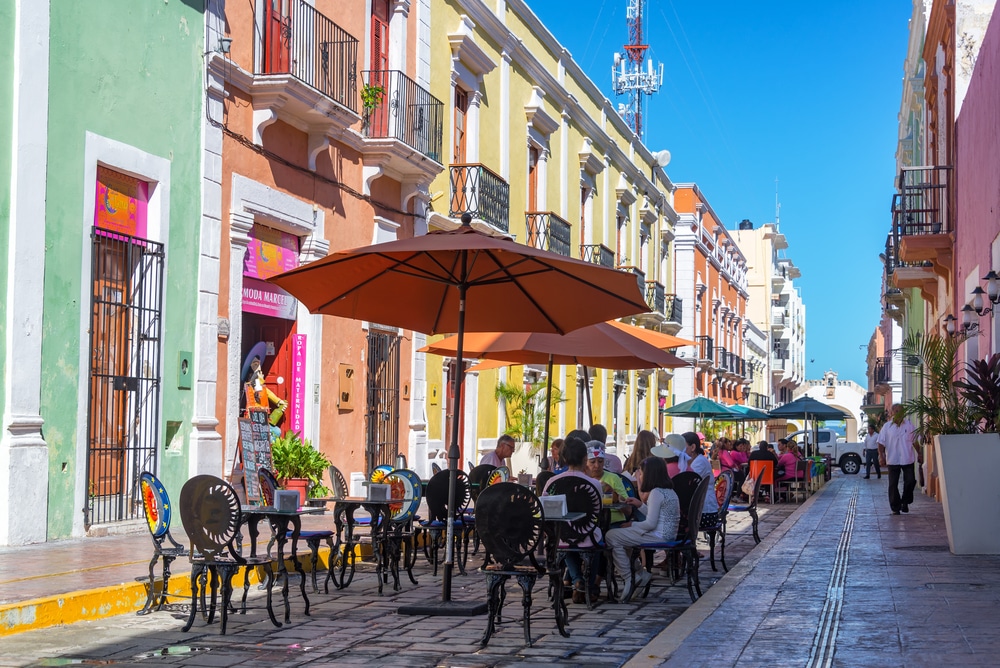
Campeche was first discovered in 1517 when a Spanish expedition group arrived on the beach of the Mayan city known as Ah Kin’Pech or Can Pech.
Sometime later, Francisco de Montejo, “El Mozo,” founded it as San Francisco de Campeche. In 1777 it was granted the title of city.
Likewise, it became the entrance and exit of Novo-Hispanic products, so some pirates, buccaneers, and corsairs were more interested in these lands.
It is said that some of the most prominent crooks that arrived at this port were John Hawkins, Francis Drake, William Parker, Cornelio Holz, Henry Morgan, and Mary Read.
For this reason, in 1684, the construction of walls and bastions began. Some of them are San Juan, Santa Rosa, San Carlos, San José, San Francisco and San Miguel.
I recommend you visit the Historical Center, the Baluartes, the Biosphere Reserve of the Petenes, the Archaeological Zone of Edzná, and La Puerta de Tierra.
Uxmal Yucatan
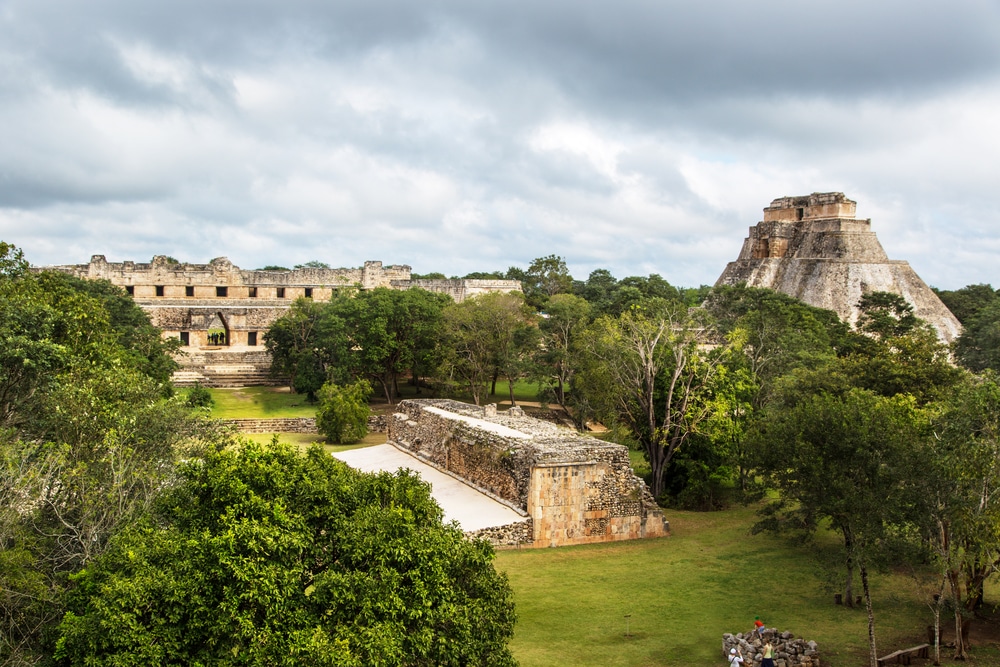
Besides being one of the most critical pre-Hispanic capitals for the Maya, Uxmal has been a World Heritage Site by UNESCO since 1996.
Also, its name comes from “Oxmal,” which means “the thrice built.”
Archaeological findings indicate that this is a settlement of Xiues, the last Mayan settlers.
Interestingly, these constructions, along with those of Tikal and Chichen Itza, represent the Maya culture at its most advanced stage in the history of Mexico.
On your visit, you will find 15 buildings, the most outstanding are the Pyramid of the Soothsayer, the Nun’s Quadrangle, the Governor’s Palace, the Great Pyramid, and the South Temple.
Consequently, you can enjoy the night show of light and sound in the ceremonial center accompanied by a visual experience of Mayan stories.
I recommend reading the Chilam Balam before your visit, and while traveling by car, visit the Ecopark Chocolate Museum, where you will learn about the history of cacao.
Merida Yucatan
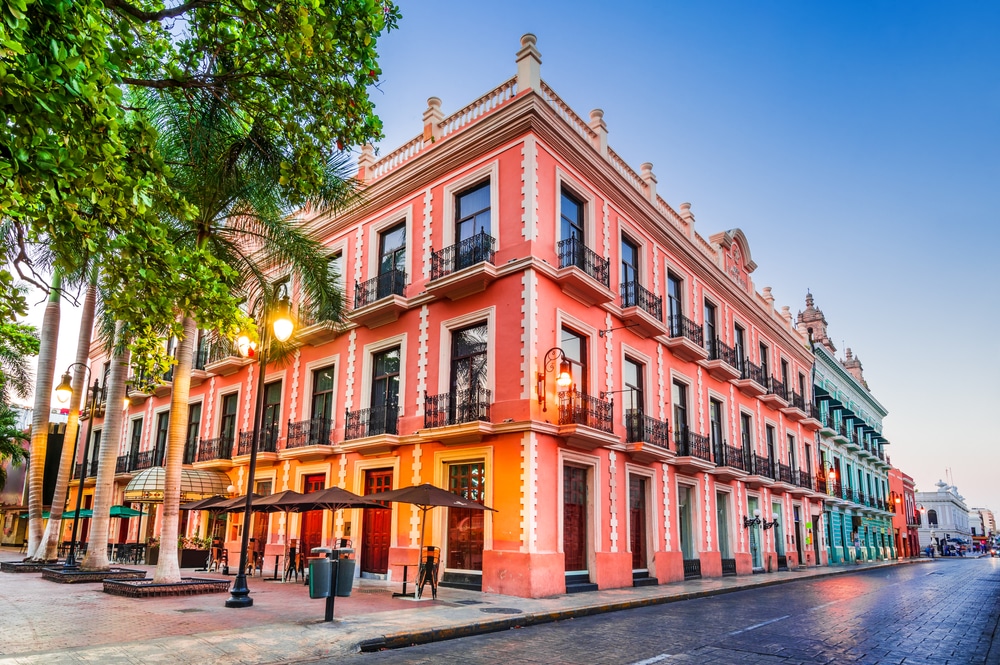
One of Yucatan’s tourist routes begins in Merida, founded in 1542 by Francisco de Montejo in the ancient city of Toh, which means “City of the five hills.”
In the beginning, with the arrival of the Spaniards, the five pyramids of the city were destroyed, and their ruins were used to construct buildings, among them the Cathedral of Merida.
Merida is known as “The White City” and is the capital of Yucatan.
It is the largest city with an important colonial past and the most monuments in the region. Likewise, its nickname is because most of the buildings were white.
What are the best attractions in Merida?
- Plaza Grande: You will find churches, markets, museums, restaurants, and hotels
- Casa Montejo Museum: A house that remained to the descendants of the conquistadors of Yucatan until the 19th century
- Catedral de San Idelfonso: The first cathedral to be built in Latin America and the oldest in Mexico
- Monumento a la Patria: A piece of art that offers a vision of Mexico’s history
- Paseo Montejo: Merida’s main avenue with houses in an architectural style similar to Madrid
- Palacio de Gobierno: A building that houses impressive murals of the history of Yucatan
Izamal Yucatan
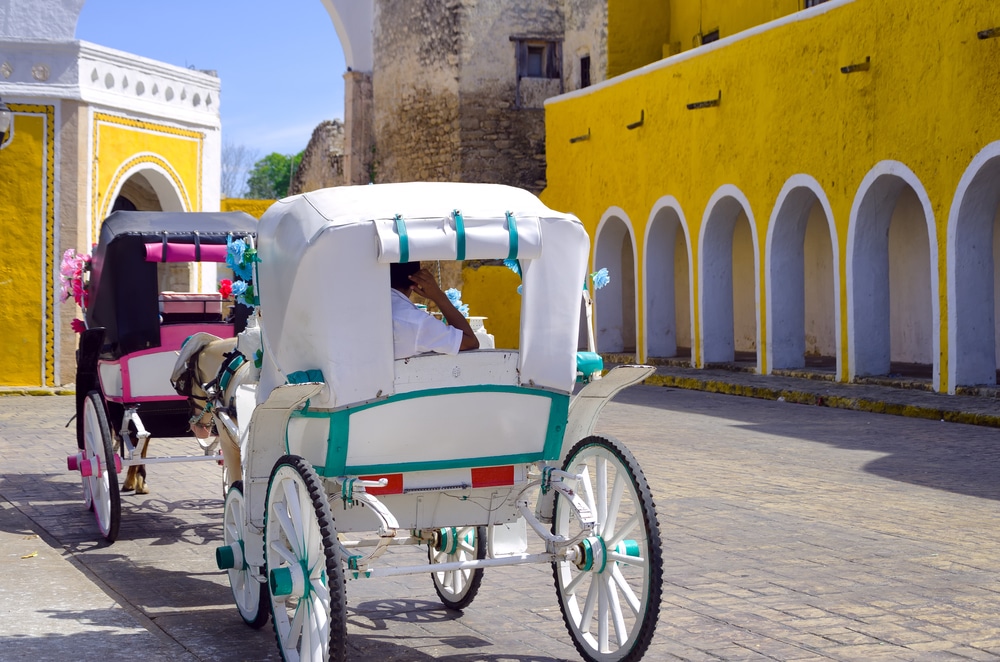
Due to its important historical and cultural legacy, your Mayan Route continues in Izamal, one of Yucatan’s Magical Towns.
Also, an impressive fact is that all the houses, stores, and churches are painted yellow.
The town is called “La Ciudad Amarilla” (The Yellow City). It’s located about 70 km from Merida by car.
Izamal was a powerful Maya religious center during the classic period, founded by the god Zamná, considered the god of the universe of the Maya.
Likewise, this civilization was known as the “City of the Hills.” While on tour, you can visit the Kinich Kak pyramid, dedicated to the Mayan god of the sun.
Chichen Itza
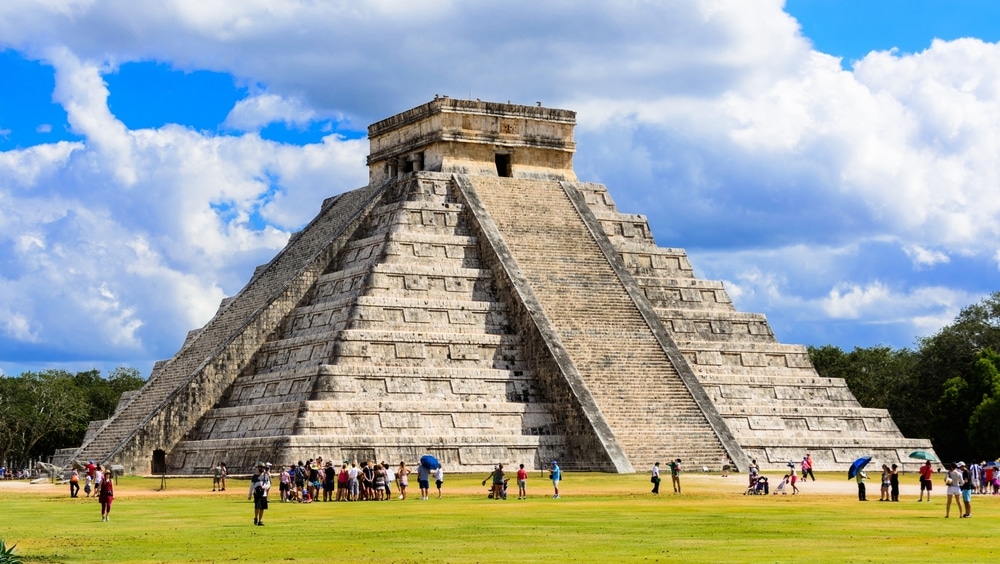
The adventure continues in the legendary city of Chichen Itza, declared a World Heritage Site by UNESCO in 1988 and a Wonder of the Modern World since 2007.
Initially, this political and cultural center was founded between 325 and 550.
It was one of the largest settlements in the northern center of the Yucatan Peninsula.
Around the year 800, the Toltecs invaded the area, which resulted in the appreciation of the characteristics of both cultures.
Chichen Itza is 1 hour and 30 minutes from Merida, so arriving by car is an excellent option.
This site occupies 15 km2 and is one of the best-preserved sites of the Mayan civilization.
Likewise, the main attraction is the Castillo de Kukulkan, where the feathered serpent can be seen during the spring equinox as a light projection on the pyramid.
Some monuments you should not miss are the Ball Game Court, the Sacred Cenote, the sculpture of the god Chaac, and the House of the Nuns.
Finally, don’t forget to go to the night show of light and sound called “The Night of the Mayas,” a narration of the history of the Mayas in the period of Chichen Itza.
Valladolid Yucatan
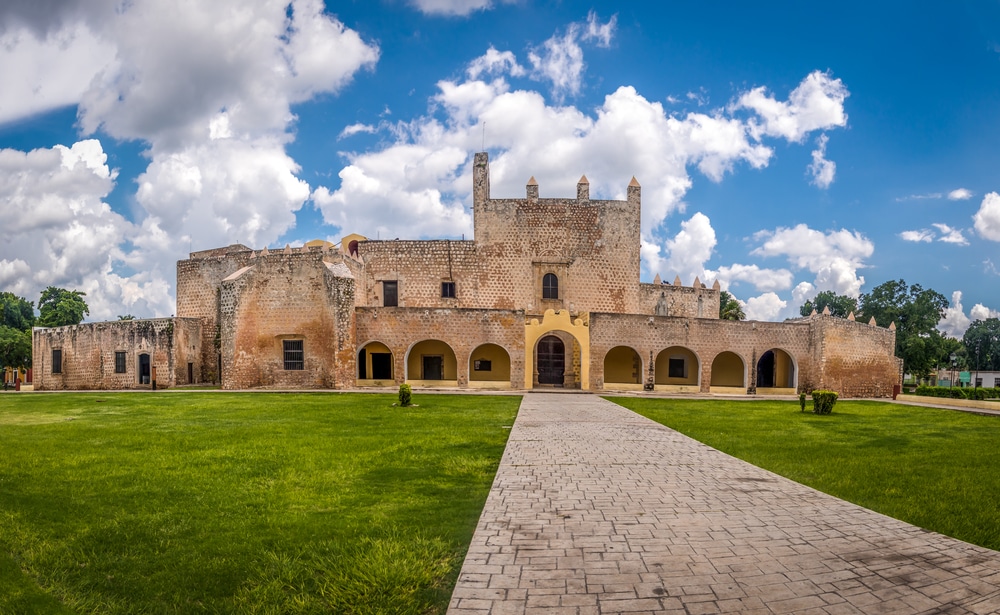
The tour of the Yucatan Peninsula continues in Valladolid, the so-called “Pearl of the Mayan Orient,” located between Merida and Cancun, 160 km away.
Valladolid is the second most important city in Yucatan. It was founded in 1543 in the ancient Mayan city of Zací, which means “The Sultan of the East.”
Two significant events in the history of Mexico also took place here: the Caste War in 1847 and the spark of the Mexican Revolution in 1910.
On your way to Valladolid, you will visit Chichen Itzá, Ek Balam, or Cobá. You can also visit temples and ex-convents such as Santa Lucía and San Bernardino.
Ek Balam
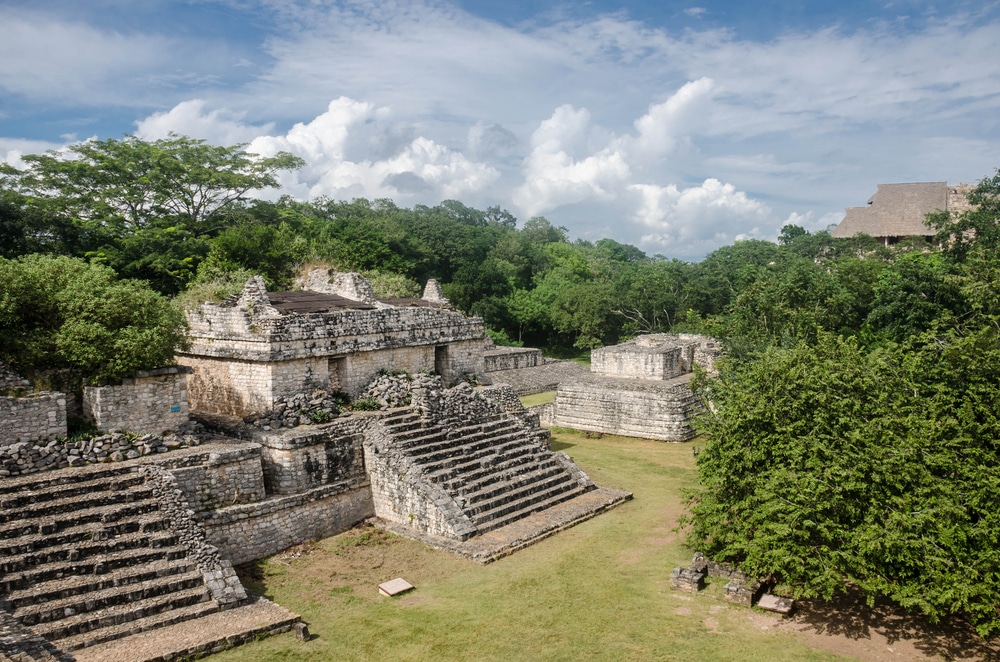
Ek Balam is an ancient Mayan city surrounded by jungle in Yucatan. It was founded in 300 B.C. and later abandoned by the arrival of settlers.
This city had its most extraordinary splendor and maximum development during the Late/Terminal Classic period, between 600 and 900 A.D., being the possible seat of the “Tlalol” kingdom.
It is also known that the first king was Ukit Kan Le’t Tok, who was in charge of constructing the largest ostentatious temple, what we know today as the Acropolis.
A curious fact is that the king’s remains are found in the Sak Xok Nahh and that he was buried with an offering of more than 7,000 pieces of wax vessels and snail objects.
Besides visiting the Acropolis, you can see the fantastic arched entrance with four gates that point to each cardinal point and, of course, the Oval Palace.
You can get there by car if you want to visit this emblematic archaeological site. It’s about 30 minutes from Valladolid, and the parking is free.
Tizimín
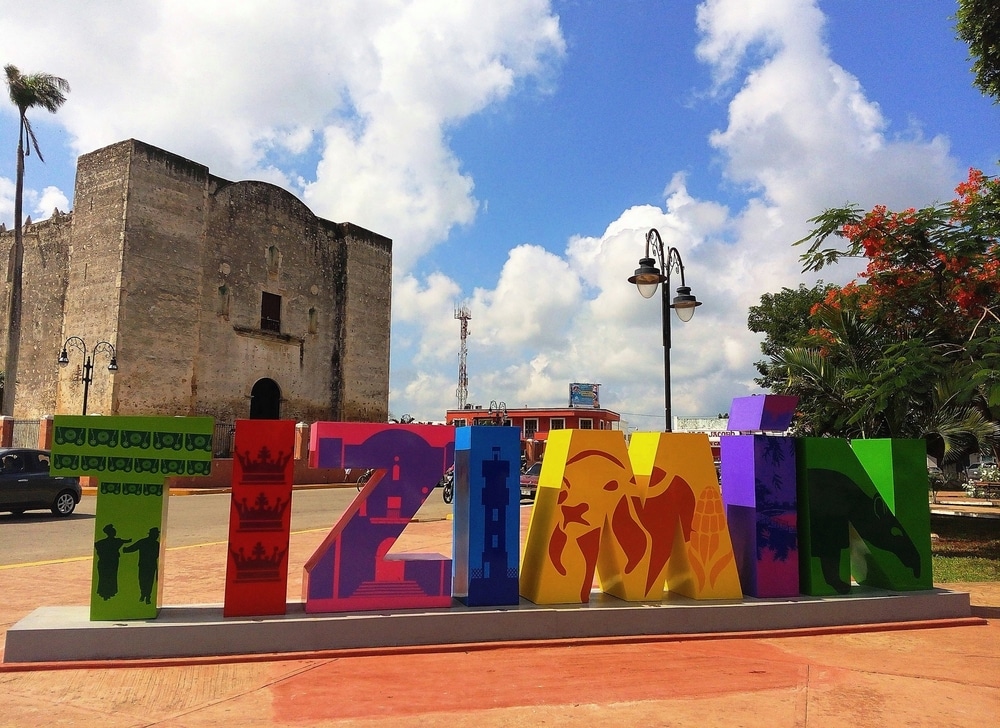
The next destination on the Mayan Route is Tizimín, translated as “Place of the Tapir,” although it is also known as the city of the Kings.
Some of the best things to do in Tizimin are:
- Visit the Sanctuary of the Holy Kings, which houses the sculptures of the Three Kings
- Go to the Franciscan Exconvent of Kikil, located 5 km from Tizimín, and take the opportunity to stop at the Kikil Cenote
- Visit the Kulubá Archaeological Zone, a Mayan construction dating from 300 BC to 1000 AD
On February 28, 1975, Queen Elizabeth of the United Kingdom visited Tizimín to inaugurate the Tizimín Zoo and Botanical Park.
Ría Lagartos

The tour continues to Ría Lagartos, located between San Felipe and Tizimín, declared a Special Biosphere Reserve in 1979.
In the beginning, this territory belonged to the Ecab chiefdom during pre-Hispanic times until 1900, when it became the head of the municipality.
On the other hand, you should know that it is famous for the arrival of more than 20,000 pink flamingos between January and September, their breeding season.
It is also an area visited by sea turtles between June and August.
It also conserves more than 250 species of birds.
You can explore different ecosystems, beautiful beaches, tropical forests, coconut plantations, and beautiful ceiba trees, the symbolic tree of Yucatan.
You can reach Tizimin by car in Merida, taking approximately 2 hours and 30 minutes.
Finally, if you are interested, you can do night activities such as going on the night tour to see crocodiles or touring the town of Lagartos by bicycle.
Las Coloradas pink lagoon: A must-see of the Mayan Route
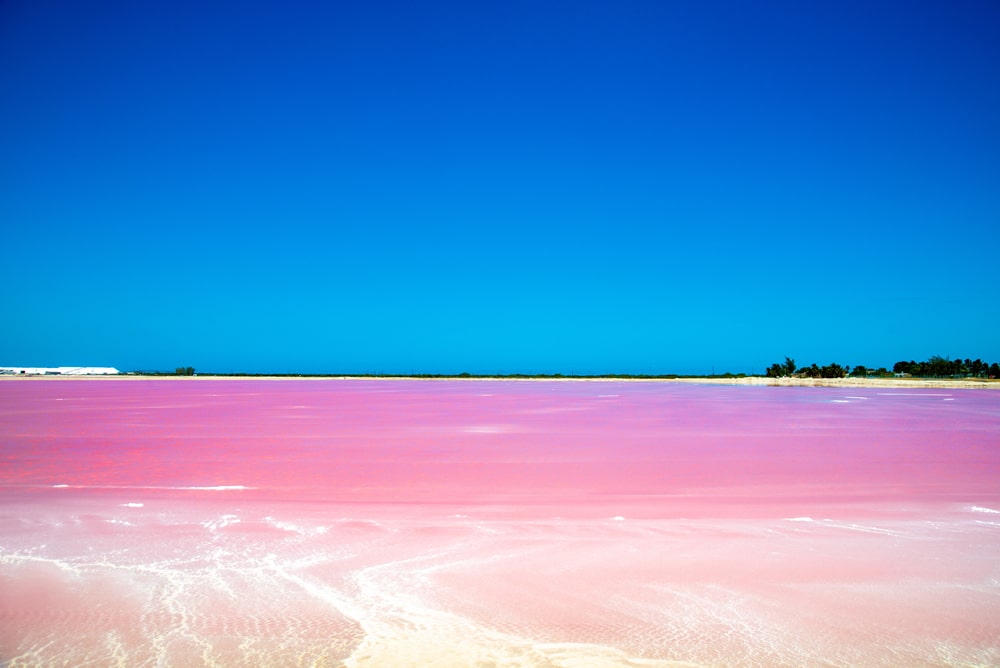
The Mayan Route continues in Las Coloradas. Located approximately 3 hours and 30 minutes from Cancun by car and 3 hours and 15 minutes from Playa del Carmen.
One of its main characteristics is the fascinating landscape of its waters that turn a cotton candy color, with pastel skies and soft white sand.
You can also find many exotic animals, such as flamingos, crocodiles, jaguars, sea turtles, and many birds.
The most beautiful thing is the pink color of the water. This phenomenon is due to the saltwater attracting brine shrimp, plankton, and red algae, which are concentrated in the light.
In addition, another fact is about the color of the pink flamingos, which usually take this color because of the algae, plankton, and shrimp they eat since they are initially white.
Now, within the historic events of the ancient Maya, this place takes importance in the collection of sea salt because they used it to preserve their food.
When is the best time to go to Las Coloradas? The best season is between March and August, around noon.
El Cuyo Yucatan
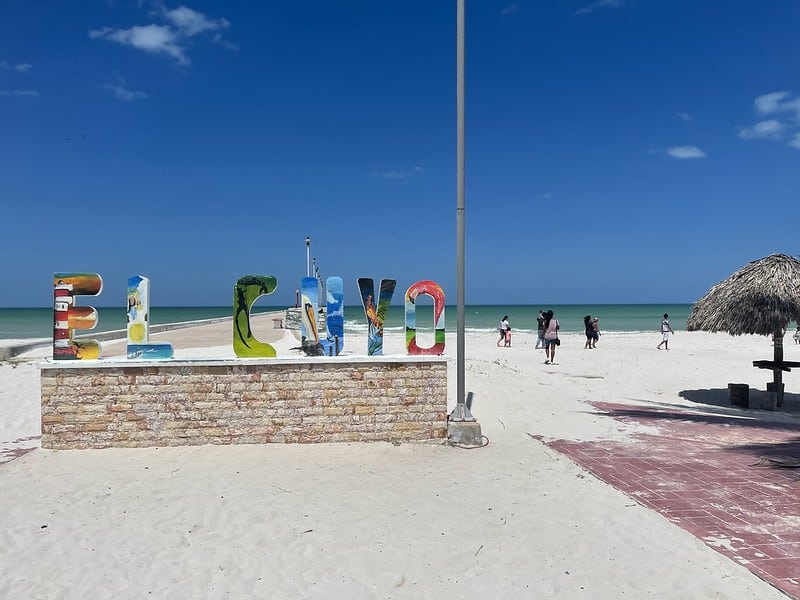
El Cuyo is a small town that, until a century ago, served as a lumber port, where national and foreign ships arrived in search of wood; the Cuyo de Ancona ranch carried out these activities.
This ranch was known as the “Cerro de Los Amantes” (Lover’s Hill).
Today you can find natural beauties such as mangroves, lakes, and petrified forests, surrounded by palm trees, coconut trees, and ceibas, the representative tree of Yucatan.
It is also important to know that it is part of the Rio Lagartos National Park, and you will be greeted by its enormous red and white lighthouse that sits on top of Mayan ruins.
Read more about National Parks in Mexico
El Cuyo is believed to be the last tourist spot in the Gulf of Mexico, and it’s located 2 hours and 30 minutes from Cancun and 3 hours from Merida by car.
What are the best things to do in El Cuyo Yucatan? You can practice kite surfing, paddle boarding, or kayaking, walk along the coast or rent a bike to explore the streets.
Cancun Mexico
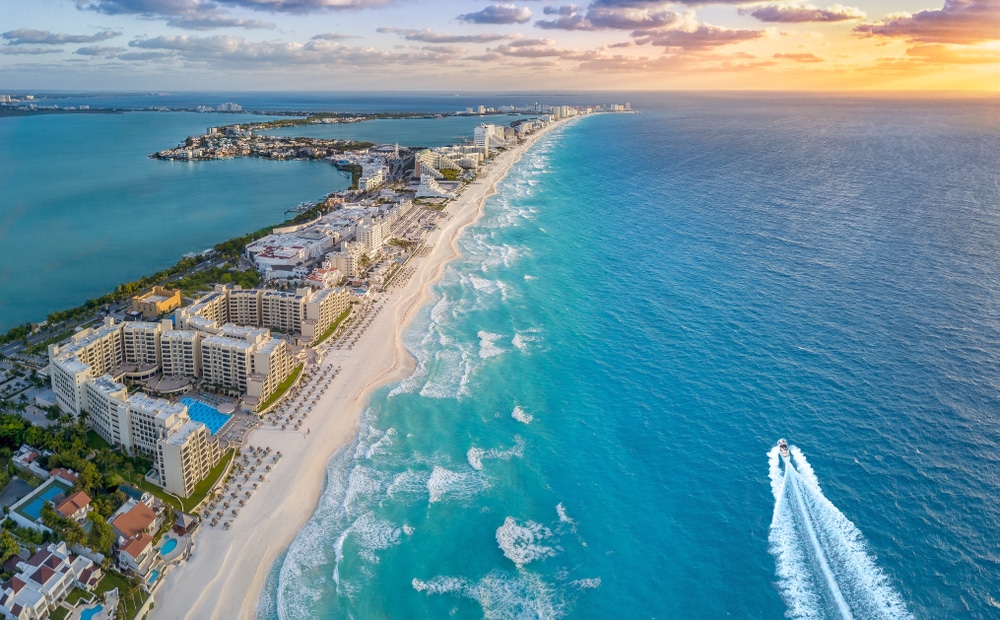
Cancun is located in the Caribbean of the Yucatan Peninsula in the state of Quintana Roo; here, you can hire a tour to visit places like:
- Puerto Morelos
- Playa del Carmen
- Akumal
- Xpu Ha
- Tulum
- Chichen Itza
- Merida
One of the main characteristics of Cancun is its white-sand beaches and turquoise waters, making it one of the most popular destinations in Mexico.
The word Cancun comes from Kaan and Kun, meaning “Cradle of Snakes,” which is the main gateway to the Mayan World.
So, what are Cancun’s tourist attractions? You can start by visiting its 11 public beaches, such as Perlas, Langostas, Tortugas, Delfines, and Chaac Mool.
All of them have been awarded the Blue Flag, which certifies them as coastal destinations of excellence in water quality and environmental management in services and activities.
You can also practice water sports such as scuba diving, snorkeling, kayaking, catamaran rides, flyboarding, windsurfing, and paddle boarding both on the beach and in the Nichupté Lagoon.
The Mayan Route: Conclusion
In conclusion, the Mayan Route is an incredible road trip adventure that offers a unique opportunity to explore the rich history and culture of the ancient Mayan civilization.
This route has something for everyone, from stunning archaeological sites to beautiful natural landscapes and vibrant modern cities.
By embarking on this journey, travelers can gain a deeper appreciation for the Mayan people’s incredible accomplishments and experience the region’s beauty and diversity firsthand.
Whether you are an avid history buff, an adventure seeker, or someone looking for a memorable travel experience, the Mayan Route is a journey you cannot miss. Vamonos!

